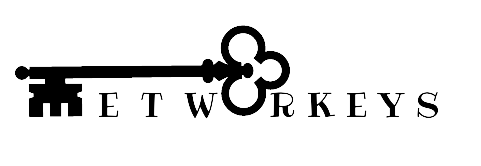Search engine marketing (SEM) is a form of Internet marketing that involves the promotion of websites by increasing their visibility in search engine results pages (SERPs) primarily through paid advertising. SEM may incorporate search engine optimization (SEO), which adjusts or rewrites website content and site architecture to achieve a higher ranking in search engine results pages to enhance pay per click (PPC) listings.
Social media
Social media are computer-mediated tools that allow people to create, share or exchange information, career interests, ideas, and pictures/videos in virtual communities and networks. Social media is defined as «a group of Internet-based applications that build on the ideological and technological foundations of Web 2.0, and that allow the creation and exchange of user-generated content. «Furthermore, social media depends on mobile and web-based technologies to create highly interactive platforms through which individuals and communities share, co-create, discuss, and modify user-generated content.
They introduce substantial and pervasive changes to communication between businesses, organizations, communities, and individuals. These changes are the focus of the emerging field of technoself studies. Social media differ from traditional or industrial media in many ways, including quality, reach, frequency, usability, immediacy and permanence. Social media operates in a dialogic transmission system, (many sources to many receivers).This is in contrast to traditional media that operates under a monologic transmission model (one source to many receivers).
«Social media has been broadly defined to refer to ‘the many relatively inexpensive and widely accessible electronic tools that enable anyone to publish and access information, collaborate on a common effort, or build relationships'».There are many effects that stem from internet usage. According to Nielsen, internet users continue to spend more time with social media sites than any other type of site. At the same time, the total time spent on social media in the U.S. across PC and mobile devices increased by 99 percent to 121 billion minutes in July 2012compared to 66 billion minutes in July 2011. For content contributors, the benefits of participating in social media have gone beyond simply social sharing to building reputation and bringing in career opportunities and monetary income, as discussed in Tang, Gu, and Whinston (2012).
Mobile marketing
Mobile marketing is marketing on or with a mobile device, such as a smart phone. Mobile marketing can provide customers with time and location sensitive, personalized information that promotes goods, services and ideas. In a more theoretical manner, academic Andreas Kaplan defines mobile marketing as «any marketing activity conducted through a ubiquitous network to which consumers are constantly connected using a personal mobile device».
Sales promotion
Sales promotion is one of the five aspects of the promotional mix. (The other 4 parts of the promotional mix are advertising, personal selling, direct marketing and publicity/public relations.) Media and non-media marketing communication are employed for a pre-determined, limited time to increase consumer demand, stimulate market demand or improve product availability. Examples include contests, coupons, freebies, loss leaders, point of purchase displays, premiums, prizes, product samples, and rebates.Sales promotions can be directed at either the customer, sales staff, or distribution channel members (such as retailers).
These efforts can attempt to stimulate product interest, trial, or purchase. Examples of devices used in sales promotion include coupons, samples, premiums, point-of-purchase (POP) displays, contests, rebates, and sweepstakes.Sales promotion is implemented to attract new customers, to hold present customers, to counteract competition, and to take advantage of opportunities that are revealed by market research. It is made up of activities, both outside and inside activities, to enhance company sales. Outside sales promotion activities include advertising, publicity, public relations activities, and special sales events. Inside sales promotion activities includes window displays, product and promotional material display and promotional programs such as premium awards and contests.Sale promotions often come in the form of discounts.
Discounts impact the way consumers think and behave when shopping. The type of savings and its location can affect the way consumers view a product and affect their purchase decision. The two most common discounts are price discounts («on sale items») and bonus packs («bulk items»). Price discounts are the reduction of an original sale by a certain percentage while bonus packs are deals in which the consumer receives more for the original price.Many companies present different forms of discounts in advertisements, hoping to convince consumers to buy their products.
In-game advertising
In-game advertising (IGA) refers to advertising in computer and video games. IGA differs from advergaming, which refers to a game specifically made to advertise a product.The IGA industry is large and growing.In-game advertising generated $34 million in 2004, $56 million in 2005, $80 million in 2006, and $295 million in 2007. In 2009, spending on IGA was estimated to reach $699 million USD, $1 billion by 2014 and according to Forbes is anticipated to grow to $7.2 billion by 2016.The earliest known IGA was the 1978 computer game Adventureland, which inserted a self-promotional advertisement for its next game, Pirate Adventure.
The earliest known commercial IGA occurred in 1991 when a spot for Penguin biscuits appeared in James Pond – RoboCod.IGA can be integrated into the game either through a display in the background, such as an in-game billboard or a commercial during the pause created when a game loads, or highly integrated within the game so that the advertised product is necessary to complete part of the game or is featured prominently within cutscenes. Due to the custom programming required, dynamic advertising is usually presented in the background; static advertisements can appear as either.One of the advantages of IGA over traditional advertisements is that consumers are less likely to multitask with other media while playing a game, however, some attention is still divided between the gameplay, controls, and the advertisement.

Comentarios recientes